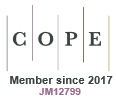What interventions support people in quitting smokeless tobacco use?
Vanessa Jordan 1 *
1 *
1
Livingstone-Banks J, Vidyasagaran AL, Croucher R, Siddiqui F, Zhu S, Kidwai Z, Parkhouse T, Mehrotra R, Siddiqi K. Interventions for smokeless tobacco use cessation. Cochrane Database of Systematic Reviews 2025, Issue 4. Art. No. CD015314. doi:10.1002/14651858.CD015314.pub2.1
Background
Smokeless tobacco, consumed without combustion, is used by over 300 million people globally, predominantly in South and Southeast Asia.2 These products vary widely in form and composition, often including ingredients like areca nut and slaked lime, which can enhance nicotine absorption and addictive potential.2 Southeast Asian immigrants use smokeless tobacco in both New Zealand and Australia, and although they are aware of the associated health risks (increased risk of head and neck cancers and cardiovascular risk), many find it difficult to quit.3,4
Clinical bottom line
This Cochrane review suggests that both cessation counselling and brief advice will help users cease smokeless tobacco use. In an addition to these measures, it would also potentially be helpful to offer nicotine replacement or Varenicline to aid cessation efforts, see Table 1.1
| Intervention | Success | Evidence | Caveat | |
|---|---|---|---|---|
| Counselling | Counselling resulted in increased cessation rates comparative to usual care. | This evidence is of moderate quality and is based on 7414 participants from 21 studies. | Harms were not studied on this review. Most of the evidence came from the United States and may not be universally applicable to other areas. | |
| Brief advice | Brief advice resulted in increased rates of cessation comparative to no support. | This evidence is of moderate quality and is based on 6271 participants from 7 studies. | ||
| Nicotine replacement | Nicotine replacement resulted in increased cessation rates comparative to placebo or no medication. | This evidence is of low quality and is based on 2826 participants from 11 studies. | ||
| Bupropion | Bupropion was not shown to increase cessation rates comparative to a placebo. | This evidence is of low quality and is based on 293 participants from 2 studies. | ||
| Varenicline | Varenicline resulted in increased cessation rates comparative to placebo. | This evidence is of moderate quality and is based on 508 participants from 2 studies. |
References
1 Livingstone-Banks J, Vidyasagaran AL, Croucher R, et al. Interventions for smokeless tobacco use cessation. Cochrane Database Syst Rev 2025; 4(4): CD015314.
| Crossref | Google Scholar | PubMed |
2 Siddiqi K, Husain S, Vidyasagaran A, et al. Global burden of disease due to smokeless tobacco consumption in adults: an updated analysis of data from 127 countries. BMC Med 2020; 18(1): 222.
| Crossref | Google Scholar | PubMed |
3 Lokhande S, Glover M, Selket K. Chewing tobacco use among South-East Asian men in Auckland. Int J Migr 2013; 9: 46-52.
| Crossref | Google Scholar |
4 Saraswat N, Prabhu N, Pillay R, et al. Oral cancer risk behaviours of Indian immigrants in Australia: a qualitative study. Aust N Z J Public Health 2022; 46(1): 87-94.
| Crossref | Google Scholar | PubMed |


